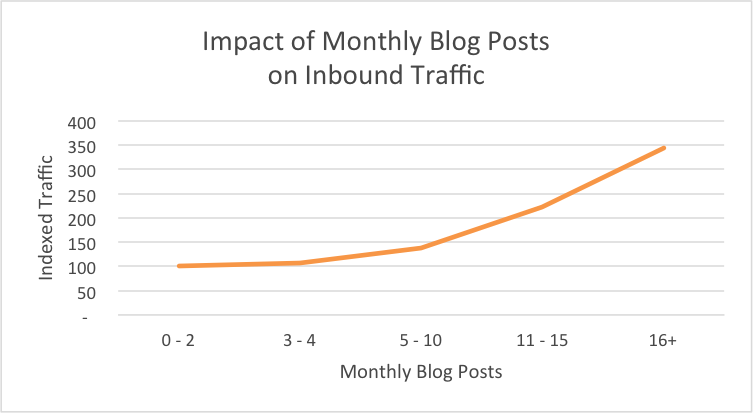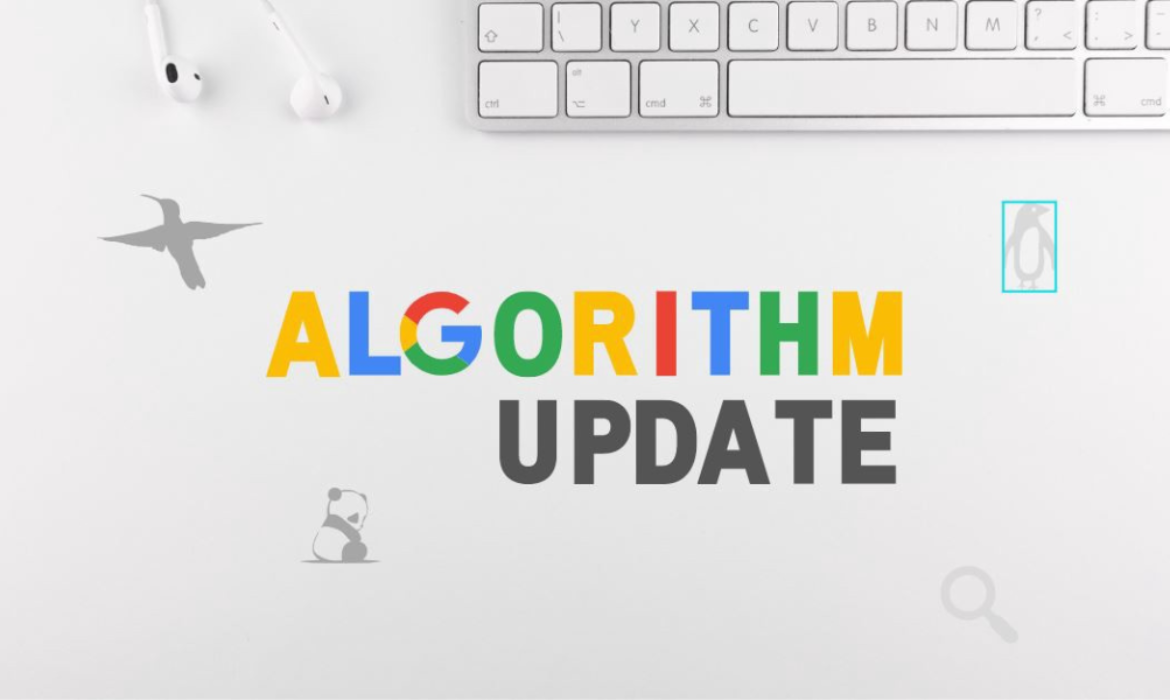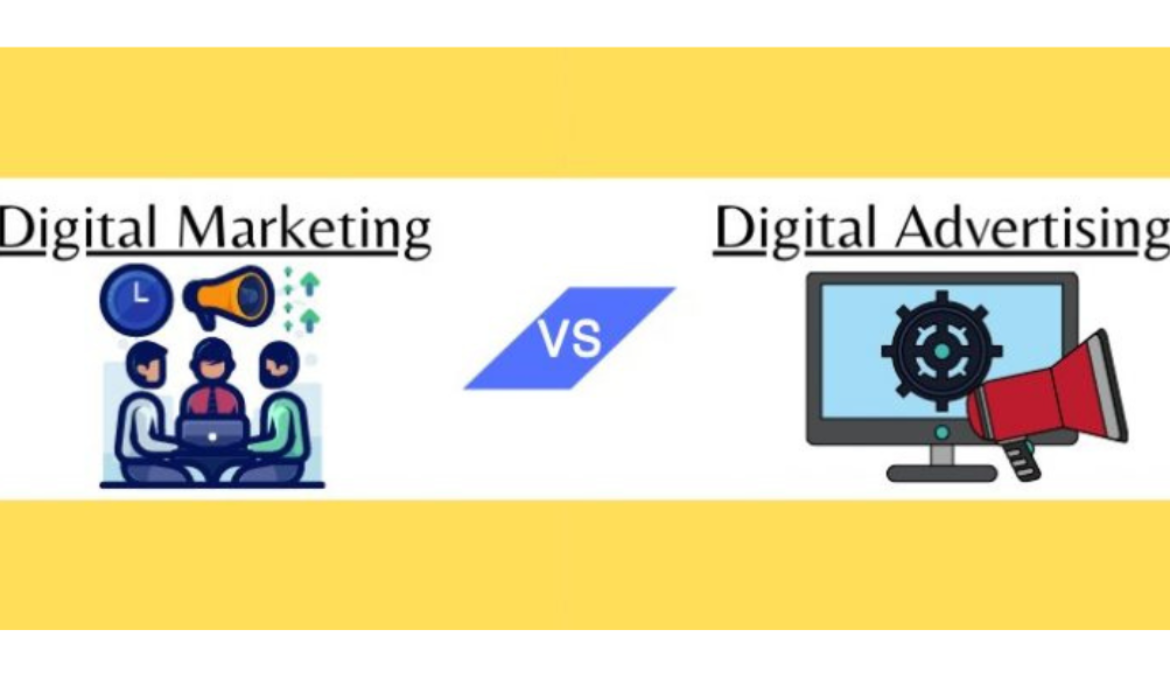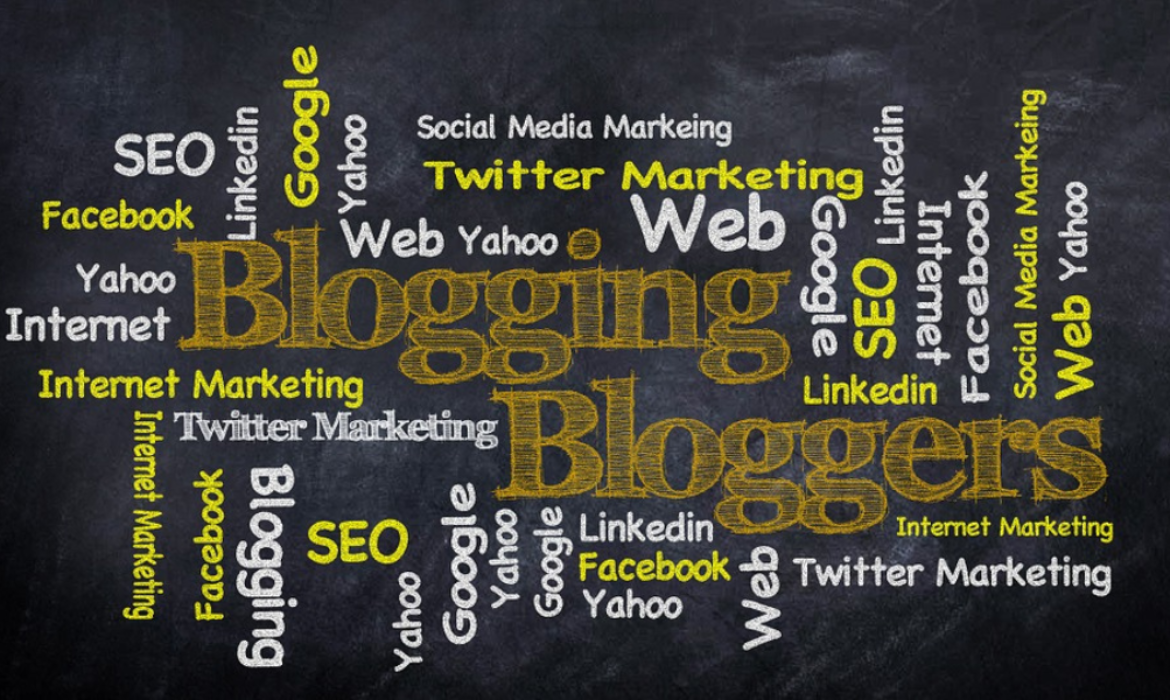How Google’s Page Experience Will Change the Face of SEO in 2021
Google announced a new ranking algorithm -Page Experience- designed to evaluate web pages based on the user’s experience.
Will this impact my traffic and SEO? Yes.
But the good news is — it will be rolled out in 2021. Google said it will provide six months’ notice beforehand. So, there is ample time to prepare for it.
What is Page Experience?
Page Experience measures aspects of how a user perceives the experience of interacting with a web page. Simply, it means if Google thinks that the user experience is poor on your pages, it may not rank those pages as highly as of now.
Here is an example that Google doesn’t want users to experience.

Image Credit: Search Engine Land
In the above GIF shared by Google, the user was trying to click on “No, go back “ but because of an install bar pop up, it pushed the whole page down and led the user to click on “Yes, place my order” accidentally.
The purpose of this Google Page Experience update is to ensure that the sites that rank on top are not creating experiences that users hate. This shift is a step to a big change in SEO.
Google has a detailed developer document on the page experience criteria. The new Page Experience update uses the existing Google ranking factors -page speed, mobile-friendly, safe browsing, HTTPS, presence of intrusive ads, and now also layout shifts Google is refining metrics around speed and usability and these refinements are under Core Web Vital.
What are the core web vital?
They include real-world, user-centered metrics, that give scores on aspects of pages such as load time, interactivity, and the stability of content as it loads.
The core web vitals and existing Google ranking factors make the new Page Experience algorithm.

Image Credit: Google

Image Credit: Search Engine Land
These are the core web vitals factors:
- Largest Contentful Paint (LCP): Measures the Loading performance and should occur within 2.5 seconds of when the page starts loading.
- First Input Delay (FID): Measures the user’s interactivity with the page and pages should have an FID of less than 100 milliseconds.
- Cumulative Layout Shift (CLS): Measures visual stability of a page which means pages don’t have jumping buttons. The page should maintain a CLS of less than 0.1.
Additionally, a web page should not contain malicious or deceptive content, mobile-friendly, content easily available to users, and should be servers over HTTPS.
Preparation for this update
Google is adapting its algorithm to closely align with its aim of showing the sites first that the user likes. According to Google, changes will not happen before early next year, so no immediate action is needed.
This update will use Accelerated Mobile Pages (AMP), page experience metrics for scoring purposes if you have an AMP version of your page.
Good content will still be the most important factor despite a poor page experience.
“While all of the components of page experience are important, we will prioritize pages with the best information overall, even if some aspects of page experience are subpar.
A good page experience doesn’t override having great, relevant content. However, in cases where there are multiple pages that have similar content, page experience becomes much more important for visibility in Search.”
The future will say how big will this update be, till then start preparing for it as sites will get better with this update.
Roundtable with Industry experts
Here are the tweets from the roundtable that Google had with industry folks – Glenn Gabe and Aleyda Solis:
First, the update will be page-level like some other algos (https, mobile-friendly, etc.) But if there are many pages that have the same issues, they can all be impacted. Hard to say yet how much impact that would be. Could be lightweight, maybe stronger. But again, page-level. pic.twitter.com/4yiu49vKp7
— Glenn Gabe (@glenngabe) May 28, 2020
The Page Experience update will combine the new core web vitals with previous factors like mobile-friendly, https, mobile-popup algo, etc. I asked if those would be changing strength-wise. They didn't have anything to share about that. My guess is no, but anything is possible. pic.twitter.com/2EG4uXfhDa
— Glenn Gabe (@glenngabe) May 28, 2020
If a new core web vital is added in the future, it should not shock anyone. It won't be out of the blue. The metric will be written about, talked about, documented, etc. pic.twitter.com/GjA9okmmYb
— Glenn Gabe (@glenngabe) May 28, 2020
If a page has an AMP alternate that is shown to the user, then Google will take the AMP page into consideration to assess the page experience signal, since it’s the one that the users see.
…
— Aleyda Solis 🇺🇦 (@aleyda) May 28, 2020
…
* The signals taken into consideration for "page experience" will evolve and be updated yearly.
* And a confirmation: The new Page Experience as ranking signal won't be happening until next year, so there's enough time to improve things if there's the need 🙂
— Aleyda Solis 🇺🇦 (@aleyda) May 28, 2020
Learn More: Every 2020 Google SERP Feature Explained: A Visual Guide
Digital Advertising v/s Digital Marketing: Know the Difference.
In this digital age, marketing is no more a choice but a prerequisite for businesses who are leaving no stone unturned to get their message across to the customers effectively and powerfully.
Then the question arises, in order to put forward the message in the right way to the right people, which one to go for?
Marketing or Advertising?
Well, aren’t they both the same? The answer is ‘No’.
There is a thin line of difference between them. This article will help you to understand it and justify the answer to the above question.
Know the basics-
Digital Advertising:
It is also called online advertising, web advertising or internet advertising
Digital advertising is defined as a form of marketing or advertising where businesses leverage internet technologies to deliver their promotional advertisements to customers.
In simple words, if you see an ad on the internet, it is called digital advertising.
There are three types of digital advertising:
1. Pay-per-click (PPC) ads: (Adwords search ads, bing ads, etc)
For example, the ads you see in search results.

Image Credit: Wordstream
2. Display ads : (Banners, video, mobile, pop-ups, etc)
For example, this ad by eBay is promoting its products. eBay is the biggest player in banner advertising and invests a lot of money in display advertising.

Image Credit: Bannernack
3. Social ads: (Facebook, Twitter, YouTube, etc)
For example, A ‘suggested post’ on Facebook is a social ad.

Image Credit: Social Media Examiner
Digital Marketing:
Digital Marketing includes all the marketing efforts using the internet or digital technologies. Businesses leverage digital channels like emails, search engines, websites, social media, blog posts, logos, and everything else that is helpful in online promotion and connect with current and prospective customers.
There are six types of digital marketing:
- Search engine optimization (SEO)
- Social Media Marketing (SMM)
- Content Marketing
- Email and Mobile Marketing
- Affiliate Marketing
- Online advertising
The following infographic explains digital marketing in detail:

Image Credit: Smart insights
Now that we know the key processes in each segment, let’s look at the major differences –
-
Digital Advertising is a part of Digital Marketing
Digital Marketing is a broader term whereas digital advertising is a part of it. This raises a question,
Is digital advertising necessary for your business?
Not really. Your business can survive without digital advertising.
Why and How?
The definitions make it clear that digital advertising is a subset of digital marketing. When you start with a business idea, from that very moment you are involved in marketing and not advertising.
Product creation, Product Pricing, Packaging, Promotion, market segmentation, target audience are all a part of your business strategy and marketing mix.

Image Credit: BBC UK
Digital advertising is part of the marketing mix. It comes into play when you use the internet to promote your product or service or to generate traffic. However, you can also choose from other tactics – a search engine, content management, social media, email marketing, etc to generate traffic.
It is not necessary to use digital advertising at the promotion stage to reach your target audience.
For instance, DemandBase in one of the campaigns used white papers, infographics, Slideshare, and webinars to generate new leads. This helped the company to generate over $1 million in new revenue through content marketing resulting in 1700 new leads and connect with 125 webinar viewers.
You can run your business without digital advertising but not digital marketing. The purpose of all marketing techniques is to generate leads and generate traffic and so you can choose any tactic – SEO or PPC or both whichever helps to grow your business.
-
Digital Advertising is an activity while digital marketing is a process:
Digital marketing helps to build a strategy to market your business in the following way:
- Define your target audience,
- Ways to attract, engage, convert and retain the customers,
- Evaluate existing and new digital channels like SEO, PPC, content marketing, etc
- Analysis and monitoring
In broader terms, digital marketing is a process that runs your entire business on the internet and it begins from the moment you start with the business idea.

Image Credit: Abhiseo
The digital marketing process is continuous. It begins with the research phase and continues until the refining stage and the data from the refining stage is used again for the research to develop a new marketing strategy. It is a perpetual and never-ending process.
Digital advertising is an activity in the digital marketing process. It fits at Step 6: Promote- the purpose is to promote your primary digital identities (blog, website, app, product or anything else) via ads to relevant people in order to generate traffic. To do this, a digital advertiser will need inputs from a digital marketer on what to promote, who to promote, advertising budget, etc. An advertiser will accordingly create an ad to generate traffic.
-
Digital advertising is tactics while digital marketing is strategic
A strategy is a long term and complex plan which involves decision-making at various levels while a tactic is a short-term plan or means to achieve the desired result.
Digital advertising is tactical in nature as the promotion of a particular product or an offer to the target audience is momentary and short term. Subsequently, it can be easily replicated by competitors.
For instance, Facebook ads are short-lived. You might run an ad on Facebook to promote your product or an offer during Easter. Once you achieve the goal from the campaign, you will discontinue it and move on with another ad campaign or platform.
Whereas, digital marketing is strategic in nature that involves long term planning, projections, defined goals and objectives, budgets and resources to achieve the objectives.
For instance, Slack is a collaboration tool that allows teams to share files and communicate easily. They had an amazing rise at the launch with 15000 users in 2014 to over 500,000 in less than a year, and currently holds nearly one and a half millions of which are paid accounts.
Their strategy was clear from day one – focusing on the customer experience. They believe in selling solutions and not products. The company acknowledges to 8000 help desk tickets and up to 10,000 tweets every month.
This is what digital marketing plan does versus a digital advertising campaign that shows results instantly.
A digital ad campaign if fails will not impact the business overall but if digital marketing campaign fails it will affect the running of the business immensely.
-
Digital advertising promotes the brand while digital marketing develops the brand image.
Digital Advertising promotes a brand, product or services. A compelling ad engages the customers, generates leads and creates brand awareness.
For instance, Typeform, a survey software company offers a freemium option with a condition that customers should include a thank-you page that includes its logo and message. It is a win-win situation that helps customers get to know the product for free and the brand gets free advertising.

Image Credit: ThinkIt Training Institute
Digital marketing builds a brand and brand image with a strategy in place. You plan the logo, design, taglines for your brand. You will develop a strategy on how your brand will be perceived by the target audience and what message your brand will convey to the target audience. It is a long term planning to build a robust brand image based on values and ethics that remain etched in the minds of the consumers.
-
Digital Advertising is sales centred while digital marketing is audience psychology centred.
Digital marketing is not always sales-driven. The ultimate goal is to increase your ROI and sales but along with building a relationship with the target audience.
Let’s say you write a blog and publish it not only to increase traffic and revenue but build a relationship with your readers. This is what digital marketing does, it is based on audience psychology. To understand your target audience, their needs, and wants, it is essential to know audience psychology.
On the contrary, digital advertising focuses on a specific segment of the target audience that can be reached via ads. For instance, if you pay $50 for a $5 CPM slot, you are content as long as you get your 5000 impressions. In digital advertising, you are not much concerned about who sees it as long as the ad is performing and reaches out to the people.
Conclusion-
After reading this article, you may now have a clear idea about digital marketing and digital advertising. They are not the same and has an individual role to play. Let’s have a short recap to have no doubts in mind.
| Digital Marketing | Digital Advertising | |
| If you see any form of marketing online, it is digital marketing. | If you see an ad on the internet, it is called digital advertising. | |
| There are six types of digital marketing:
i) Search engine optimization (SEO) ii)) Social Media Marketing (SMM) iii) Content Marketing iv) Email and Mobile Marketing v) Affiliate Marketing vi) Online advertising |
There are three types of digital advertising:
i) Pay-per-click (PPC) ads ii) Display ads iii) Social ads |
|
| Digital Marketing is a broader term and it starts from the moment you share a business idea. The marketing mix comes into place. | Digital Advertising is a subset of Digital Marketing. It is one part of the marketing mix. | |
| Digital marketing is a process. | Digital Advertising is an activity in the process. | |
| Digital marketing is strategic in nature.it involves long term plans and decision-making. | Digital Advertising is tactical in nature. Tactics involve a short-term plan and means to achieve the desired goals. | |
| Digital Marketing builds brand and brand image. A well-defined plan and strategy help to build a brand from a long term point of view. | Digital Advertising creates brand awareness. It generates traffic and promotes a brand or a little push to sales. | |
| Digital Marketing has a large number of tools and techniques to get their business to customers like blogs, videos, whitepaper, infographic, content management, website and more | Digital Advertising is a tool in the Digital marketing toolbox. | |
| Digital Marketing is based on audience psychology. It understands the target audience and creates a buyer persona. | Digital Advertising is more sales-driven and focuses on a particular segment of the target audience that can be reached through ads. |
Do You Really Need To Blog To Get Rank #1 On Search Engines?

Image Credit: Pixabay
Many business owners quiver at the idea of blogging. “Do we really need to have a blog?” is the most obvious question. The answer is “YES”. It is the most efficient way to boost your SEO rankings. In this article, I aim to explain to you in detail the importance of blogging for SEO and how it makes your site favorable for Google to rank and increase your organic traffic.
You may have a million reasons to blog, some of them include building trust among the followers, positioning yourself as an experienced expert, and sharing news or know-how with your company’s followers.
Six Reasons Blogging is important for SEO
1. Provides fresh content:
Google tends to favor websites with a lot of ‘high-quality content’. You don’t change the pages on your websites often, hence writing a blog comes in the picture. Google loves fresh content whether you update your blog every day or every week. The highlighting point is the quality of the content which is the most important factor. Quantity of articles with low quality will not help or contribute to rankings. Focus on creating high-quality articles regularly and ensure you are optimizing each article for different keywords. Avoid writing articles with the same keyword as it competes with each other and limits your keyword ranking opportunities. Google doesn’t deliver outdated information to the searchers but regularly updated and fresh content sends signals to them that the site is working. It also gives search engine algorithms reasons to index your website more often. A Hubspot study reveals more often a company writes articles, more organic search traffic it receives.

Image Credit: eWebscapes
2. Helps to implement long-tail keywords:
Keywords don’t hold the same weightage that they once did. Many people start SEO wanting to aim for the most relevant keywords for their business. For example, if you are selling ‘camping gadgets’ and show up on page one for the search ‘camping gadgets’.Unless you are the biggest brand for camping gadgets, you will find it difficult landing a top spot for the search. SEO is competitive and the best bet for the brands is to look for longer, specific keywords related to the business and try to rank those. These are called long-tail keywords. Blog posts on the website are an excellent way to use long-tail keywords.
For instance, a local store might be trying to rank the keyword ‘camping gadgets’ but also aiming to rank long-tail keyword ‘Gadgets for car camping’. This gives them a chance to write a blog post on ‘ Types of gadgets needed for car camping’ and link it to their product using the long-tail keywords. Long-tail keywords are extremely important for SEO strategy and studies suggest that 50 per cent of the searches are four words or longer. From the above example, we understand creating blog articles allows the site to rank many keywords. The traffic opportunity is more from these topics than on page three or four for using more popular terms.
3. Google is a ‘Topical Match Engine’
Google is no longer looking for a large number of pages but for sites who are a book of knowledge on their topics. They have changed their algorithms and now understand the context of the whole topic, being a topical match engine versus a simple keyword match engine. This shows that having a single page or article with a single keyword around the topic is not sufficient for your site. You need to represent the topic more comprehensively to appear in Google search results.
Blogging provides an outstanding opportunity to demonstrate your thoughts and in-depth knowledge about a topic to your readers. Writing multiple articles covering different aspects of a subject and giving detailed insights about that topic shows Google that your site is worthy to come up in the search results for that topic. This gives a boost to the rankings of competitive content on your site.
4. Opportunities for backlinks:
A link for a link. A prominent way to get those links and increase the authority of your domain is by blogging. Look out for relevant blogs to link to your blog posts and they may provide a link to your website on theirs. These links have a direct effect on your rankings and help generate traffic to your website as well as other company’s site.
However, it is important to note that the process of gaining inbound links should be done naturally. If the website linked to your blogs or site has no relevance with your industry then it will violate Google’s terms of services and can lead to a high penalty situation.
Therefore, produce high-quality content often to earn inbound links organically and build a strong following on social media to share articles each time. Blogging increase chances to earn inbound links from other websites that is highly impactful for SEO.
Research shows that companies who blog get 97 per cent more links to their websites.
5. Increases interlinks:
SEO is so much about links and internal links and easiest to get as you create them for yourself. So, including internal link points users from one page of the site to another. As you add more pages to various but related topics, you can naturally link them to each other.
Every time you use anchor text to tell Google what page you are linking while building up its connection to your target keyword in how the algorithm sees it.
6. Shareable Posts:
When your target audience likes the blog post, they share it on social media. The more social media shares it gets, the more people will click, like and reshare, and explore other pages on your website. When you get a lot of traffic and get repeat visitors that tell Google – people like your website and raise your rankings and authority level in their algorithm.
Wrapping up
Blogging and SEO go hand-in-hand. Blogging consistently helps increase counts of keywords and pages, inbound links, and create comprehensive articles. Target audience loves to hear from you and Google loves your updated and relevant website. Search engines look for blogs that explain the premise of the subject that interest bloggers and you can take advantage of it to up your rankings. So get cranking on the blog posts




